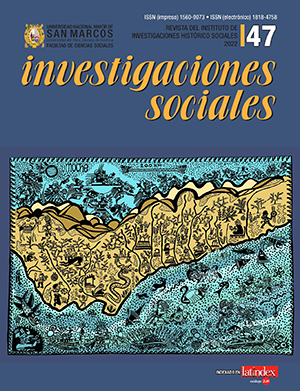Searching the vision of the hummingbird. The expansion of the role of women in ashaninka chamanism
DOI:
https://doi.org/10.15381/is.n47.23868Keywords:
chamanism, Amazonia, gender, symbolic ecology, ashaninkaAbstract
Until recently Amazonian chamanism has been described in the ethnographic bibliography as limited to masculine gender, because taboos regarding a biological factor like menstruation blood were considered a restriction to the practice of this function by women. Ashaninka chamanism is involved not only in the preservation of person’s health, but also in that of the natural resources used by these hunter-gatherers. Nowadays however they are confronted with a gradual disappearance of masculine chamanism, because of religious and political persecution and scarcity of resources as a result of settlement in small villages, destruction of forests by the lumber industry and colonization, cattle raising, and pollution of water courses by the activities of drug barons. By these circumstances, taboos are removed, changes are made in the ritual, and a new feminine chamanism arises, so that the traditional system may still reproduce
Downloads
Published
Issue
Section
License
Copyright (c) 2022 Enrique Rojas Zolezzi

This work is licensed under a Creative Commons Attribution 4.0 International License.
AUTHORS RETAIN THEIR RIGHTS:
a. Authors retain their trade mark rights and patent, and also on any process or procedure described in the article.
b. Authors retain their right to share, copy, distribute, perform and publicly communicate their article (eg, to place their article in an institutional repository or publish it in a book), with an acknowledgment of its initial publication in Investigaciones Sociales.
c. Authors retain theirs right to make a subsequent publication of their work, to use the article or any part thereof (eg a compilation of his papers, lecture notes, thesis, or a book), always indicating the source of publication (the originator of the work, journal, volume, number and date).













